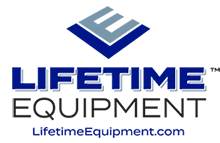1. Clean First, Then Sanitize
According to the CDC, it’s important to know the difference between cleaning vs. sanitizing, and identifying the significance of each. Cleaning reduces the number of germs on a surface by scrubbing with soap and water. Using a bristled pad or brush to reach into the grout and texture of floors allows for a deep clean, eliminating more surface contaminants. Traditional floor mops and cleaning pads glide over grout lines and grooves that contain germs, bacteria, and dirt.
Disinfection follows cleaning, killing any remaining germs, which further reduces the risk of spreading infection. Without a deep clean, prior to sanitizing, germs, dirt, and bacteria still lie on a surface and in grout lines, decreasing the efficiency of the sanitization process.
2. Clean More Frequently
It’s important to clean high-traffic areas more frequently. Generally, the more people who occupy a space and touch surfaces, the higher the risk of contaminants. Start from the top and work your way down and finish the floors last. Dirt and germs that are brushed from other surfaces as you clean settle on the floor. When cleaning the floor, a bristled pad provides ease of use, attaching to any pad driver on existing floor machines, providing a deeper clean than a mop or traditional floor pad.
3. Protect Your Employees & Customers
Seeing increased traffic? More frequent cleaning will help keep up with the grime. Customers and employees alike are paying close attention to facility cleanliness. Assure them they’re protected from lingering germs by frequent cleaning and sanitizing throughout the day, not only after closing. Inform customers and employees by documenting regimented schedules.


